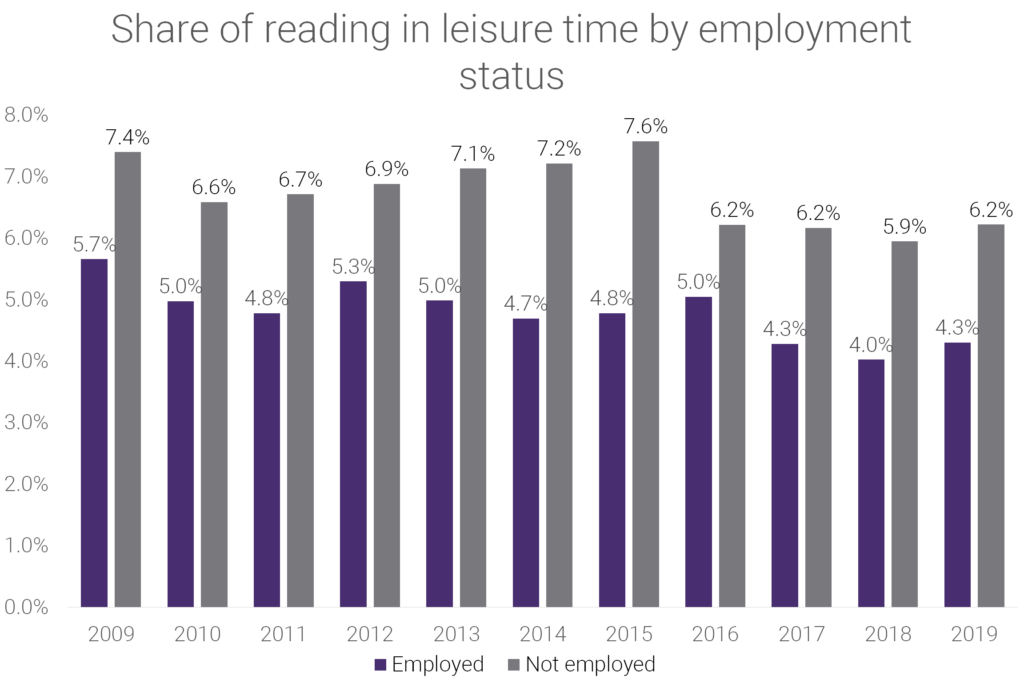According to the US Bureau of Labor Statistics, the average American spends around 5.4 hours per day on leisure activities. Given all the benefits that regular reading brings, we decided to analyze how much of their leisure time people use for reading.
Leisure time reading by year
As we already showed, the average US citizen spent 16.2 minutes per day reading for personal interest. Now we’ll dive into how big a portion of leisure time is devoted to reading.
- In 2019, out of 5.2 hours of daily leisure time, people spent only 16.2 minutes on reading for personal interest.
- This means that US citizens spent 5.2% of their liesure time on reading.
- While share of reading time increased by 5.25% compared to 2018, reading during leisure time declined by 15.3% compared to 2015, and by 19.67% compared to 2009.
- Since 2016, of all leisure ativities, the least time has been devoted to reading.
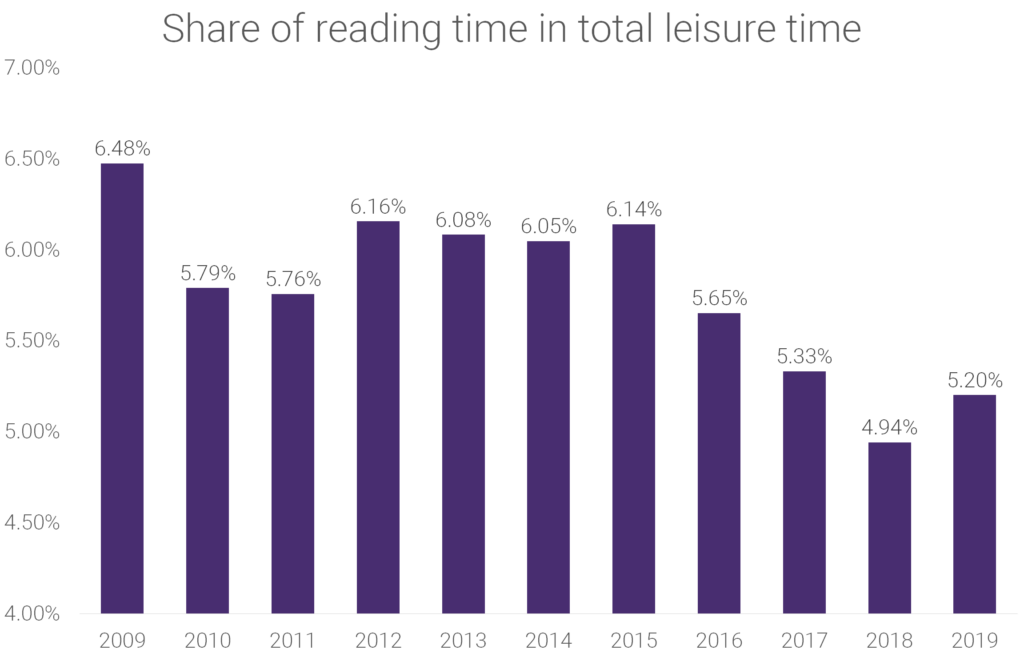
Gender differences in reading during leisure time
Even though women spent around 30 minutes less on daily leisure activities, they still manage to allocate more time to reading compared to men:
- Women spend 6.4% of their leisure time on reading, which account of over 18 minutes per day.
- Men spend 4.2% of leisure time on reading for personal interest, 53% less than women.
- Both genders reduced time spent reading since 2009, but women’t decline in reading has been more noticable.
- Women spent 8.5% of their leisure time reading in 2009, and 7.6 in 2015, but over the last 3 years reading share dropped below 7%.
- Men’s reading time has been revolving between 4% and 4.8% of total leasure time for the last 11 years.
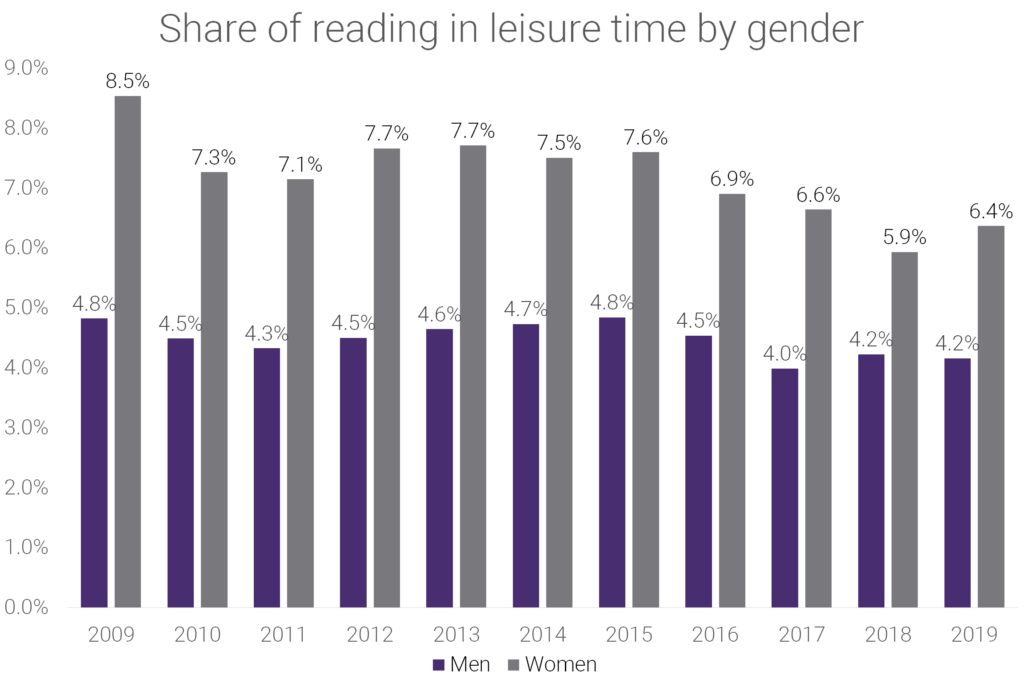
Reading during leisure time by age
- People below age 35 spend barely over 2% of their leisure time on reading.
- In 2019, for the first time over the last 11 years at least, none of the age groups spent over 10% of their leisure time readining.
- The most reading time had people over 75 years of age, with 9.5% of total leisure time.
- Share of reading in leisure time increases with older generations.
- People between 45 and 54 years of age are the only age group that maintained the share of reading time during leisure over the last 11 years.
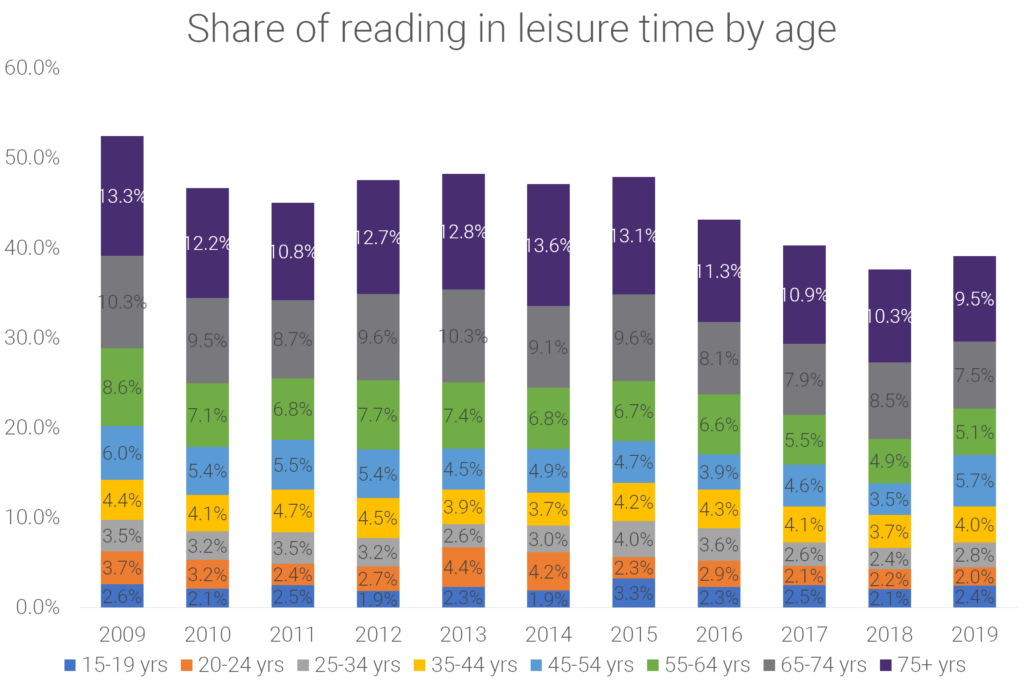
Reading during leisure time by level od education
Our previous research showed that time spent reading increases as the level of education increases, so it’s not surprising to see that highly educated people spend bigger portions of their leisure time on reading:
- People who possess at least bachelor diploma allocate 9.2% of their leisure time on reading.
- On the other side, people without high school diploma spend only 2.3% of their leisure time reading.
- For the first time since at least 2009, people with some college or associate degree spend under 5% of leisure time on reading.
- People with high scool diploma reduced their reading time share during leisure by 32.4% since 2015, and by 40% since 2009.
- People without college degree reduced their reading time by at least 30% over the last 10 years, while college graduates decreased their reading time by 9.7% since 2009.
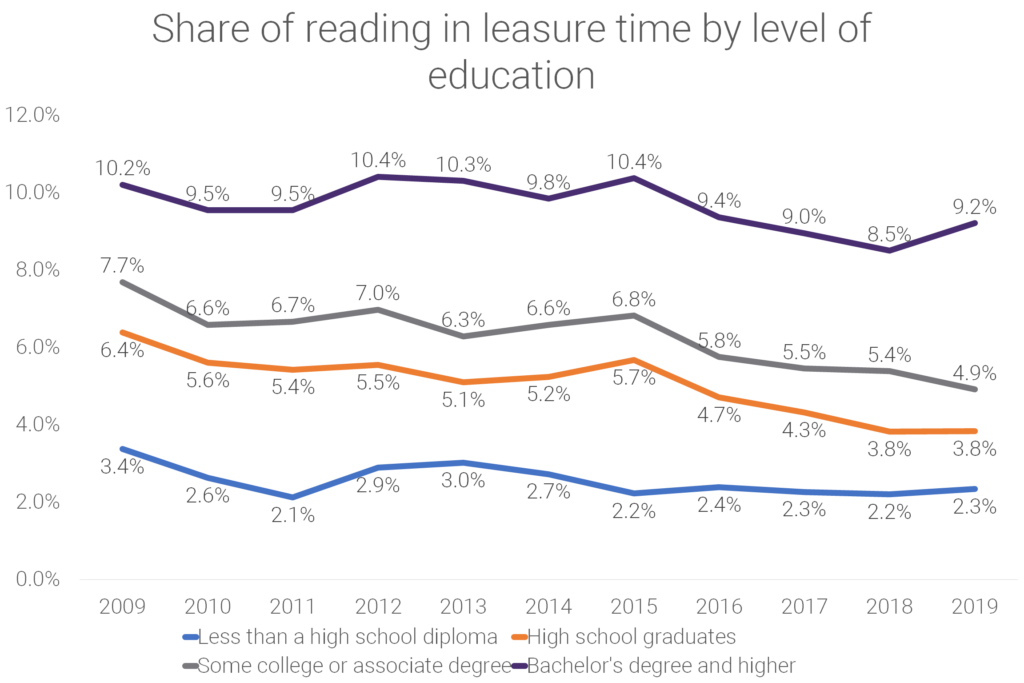
Reading time during leisure by employment status
- Unemployed people spend 44.5% more of their leisure time on reading compared to employed people.
- Employed people are spending 10% less of their leisure time on reading now compared to 2015, and 23.9% less compared to 2009.
- Unemployed people spend 17.9% less of their leasure time on reading compared to 2015, and 15.9% less than they did in 2009.
- Part-time employees spend 5.8% of leisure time on reading, 56.3% more than full-time employees do.
